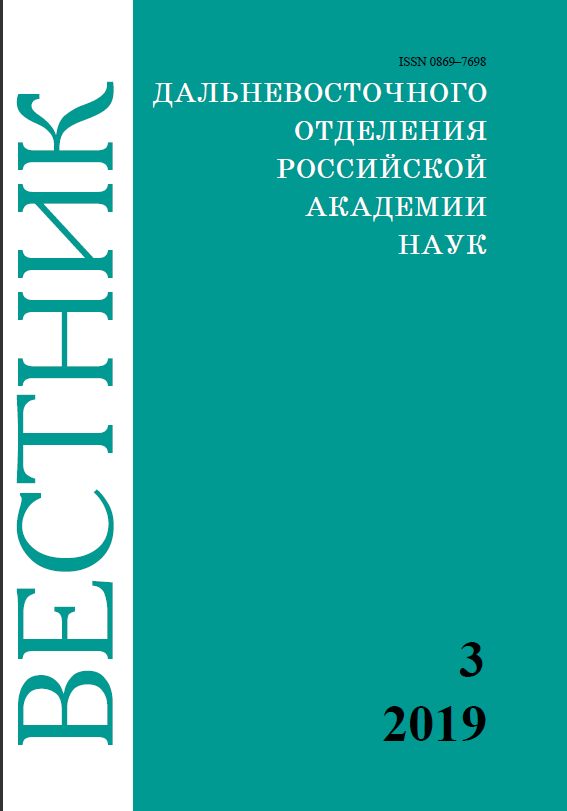Seasonal dynamics of quantitative parameters and species diversity of microorganisms in agrocenosis of the Middle Amur Region.
Keywords:
microbial community, soil microorganisms, agrocenosis, anthropogenic pressure, nitrifiers, ammonifiers, mineralization coefficient, Middle Amur Region.Abstract
Seasonal dynamics of quantitative parameters and species diversity of microorganisms in agrocenosis of the
Middle Amur Region. T.A. ASEEVA, N.E. SAVCHENKO, S.A. SHMIGIRILOV (Far Eastern Agricultural Research
Institute, Khabarovsk), K.V. KISELEV ( Federal Scientific Center of the East Asia terrestrial Biodiversity, FEB RAS,
Vladivostok).
According to research results, the main groups of microorganisms inhabiting the meadow-brown soils under oats and soybean crops as well as under the herbage were determined that are most typical for the region. The most frequent were representatives of genera Flavobacterium, Pedobacter, Bacillus, Enterobacter, Arthrobacter, Streptomyces, Acinetobacter, Leifsonia, Luteibacter, Burkholderia, Stenotrophomonas, Massilia, Microbacterium, Aneurinibacillus. The quantitative composition of soil microflora in different vegetation stages was determined, and the biological activity of soils affected by the agricultural practices and of natural ecosystem was analyzed. The anthropogenic pressure was found to have a negative effect on the number of microorganisms inhabiting the soils of agrocenoses: the content of nitrifiers was 50.2 million units/1 g abs. dry soil in the meadow against 11.66 and 4.01 million units/1 g abs. dry soil under oats and soybean respectively; the content of ammonifiers – 21.2 million units/1 g abs. dry soil against 3.14 and 3.31 million units/1 g abs. dry soil respectively. The coefficient of mineralization in the meadow was almost 2 times higher than under soybean crops (2.34 against 1.2), which indicates a higher rate of transformation processes of organic nitrogen. The highest mineralization coefficient was found in oats.


